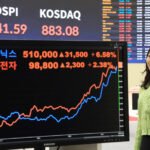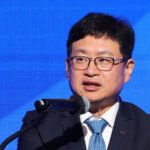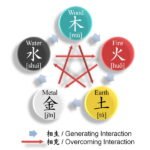Samsung’s 24 Gb GDDR7 DRAM
Samsung Electronics Co., the world’s largest memory chipmaker, has unveiled the industry’s first 24 gigabit (Gb) graphics DRAM chip, optimal for next-generation AI computing.
The South Korean tech giant said on Thursday that the graphics double data rate 7 (GDDR7) DRAM boasts the industry’s highest capacity and fastest speed of over 40 gigabits-per-second (Gbps), significantly raising the bar for graphics DRAM, designed to power future applications.
Samsung said the new chip will be installed in the next-generation systems of key graphics processing unit (GPU) customers for verification within this year, with plans for commercialization early next year.
Last year, the company said it developed the industry’s first generation of the GDDR 7 memory strain with a 16 Gb capacity and a 32 Gbps speed, one year after a 24 Gbp GDDR6 DRAM – also the industry’s first at the time – suitable for high-performance applications.
At that speed, it can process 60 ultra-high definition (UHD) movies in one second.
Samsung’s 24 Gb GDDR7 DRAM
With its high capacity and powerful performance, Samsung said the 24Gb GDDR7 will be widely used in various fields that require high-performance memory solutions, such as data centers and AI workstations, extending beyond the traditional applications of graphics DRAM in graphics cards, gaming consoles and autonomous driving.
“After developing the industry’s first 16Gb GDDR7 last year, Samsung has reinforced its technological leadership in the graphics DRAM market with this latest achievement,” said Bae Yong-cheol, executive vice president of Samsung’s memory product planning team.
“We will continue to lead the graphics DRAM market by bringing next-generation products that align with the growing needs of the AI market,” he said.
The 24Gb GDDR7 utilizes fifth-generation 10-nanometer-class DRAM, which enables cell density to increase by 50% while maintaining the same package size as the predecessor.
SK Hynix’s GDDR6-AiM chip
In addition to the advanced process node, three-level Pulse-Amplitude Modulation (PAM3) signaling is used to help achieve the industry-leading speed for graphics DRAM of 40 Gbps, a 25% improvement over the previous version.
The GDDR7’s performance can be further enhanced to up to 42.5 Gbps, depending on the usage environment, according to the company.
Power efficiency is also enhanced by applying technologies that were previously used in mobile products to graphics DRAM for the first time.
By implementing methods like clock control management and dual VDD design, unnecessary power consumption can be significantly reduced, leading to an improvement of over 30% in power efficiency, it said.
To boost operational stability during high-speed operations, the 24Gb GDDR7 minimizes current leakage by using power gating design techniques.
Samsung’s GDDR6 DRAM
PRIMED TO LEAD GDDR MARKET
GDDR 7 memory, the next generation of high bandwidth memory technology, has been under development industrywide, with Samsung in a prime position to lead the fast-growing market.
“An increasing number of customers are looking for graphic DRAMs as an alternative to GPUs, which are in limited supply. Together with high-bandwidth memory (HBM), GDDR will become critical to the advancement of the AI era,” said an industry official.
Graphics processing unit makers such as Advanced Micro Devices Inc. (AMD) and Nvidia Corp. have been buying advanced graphics chips from Samsung, SK Hynix Inc. and Micron Technology Inc.
Samsung generates the bulk of its memory business profit by making basic chips but has been beefing up the development of logic chips such as mobile processors, image sensors and automotive chips to diversify its business channels.
By Eui-Myung Park
uimyung@hankyung.com
In-Soo Nam edited this article.















